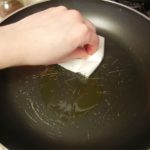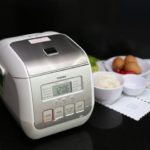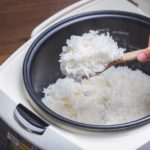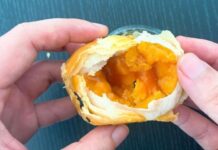Modern rice paddles are typically made from polypropylene plastic. Notably, when you purchase an electric rice cooker, the package often includes a rice paddle with small circular bumps on its surface, the purpose of which eludes many.
What is the purpose of the bumps on a rice paddle in an electric rice cooker?
No matter how advanced rice cookers become, and regardless of how perfect their non-stick coating is, sticky rice varieties or overcooked, cold rice tend to stick to the bottom and sides of the cooker. To protect the non-stick coating, many people soak the cooker in water to loosen the rice grains before scrubbing. However, using a soft sponge to clean the cooker may cause the rice grains to stick to the sponge, making the cleaning process more time-consuming.
In this case, instead of using a sponge to clean the cooker in the conventional way, the bumps on the rice paddle of an electric rice cooker come into play. Simply soak the cooker in water to soften the rice, then gently scrub the inside with the bumpy side of the paddle to remove the stuck-on rice.
These bumps are harder than a dish sponge but not as sharp as a metal scrubber, so they won’t damage the cooker or remove the non-stick coating. Gently perform the cleaning motions, and the stuck-on rice will come off. Afterward, use a soft sponge with dish soap to clean the cooker and let it air dry.
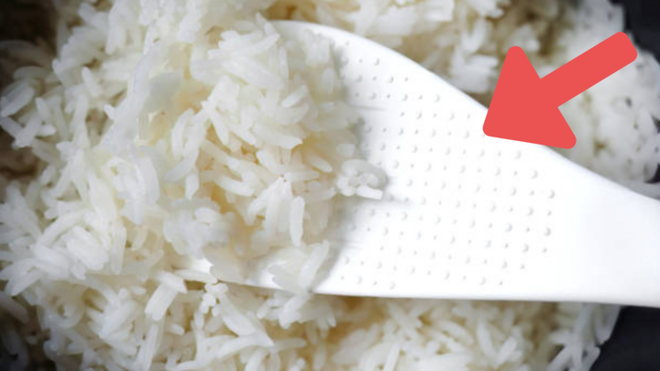
Now you know the purpose of those bumps on your rice paddle! (Photo: Istock)
Tips for Cooking Delicious and Fluffy Rice
While cooking rice is extremely simple, achieving delicious, fluffy rice that is neither too dry nor too sticky requires some attention to the following details:
Choose high-quality rice
To buy good rice, select reputable stores, and opt for fresh, seasonal rice instead of old rice, which has lost nutrients, natural sweetness, and is more susceptible to pests.
Look for rice with uniform grains, avoiding broken or yellow/black grains, which indicate old rice. Choose rice with a subtle, pleasant aroma, easily detectable, rather than an odd or musty smell.
Rinse the rice
Even though rice is relatively clean, rinsing it before cooking is crucial as it removes dust and impurities. However, there’s a technique to rinsing: simply agitating or rinsing the rice with water isn’t enough.
Vitamin B1 is mainly found in the outer layers of rice, so over-rinsing will remove nutrients like minerals and vitamins B1, B2, and B6.
Therefore, gently swish your hand through the rice to let the dust and impurities float away.
Measure water accurately
Traditionally, we use our fingers to measure the water level in the rice cooker. Place your index finger on the rice, ensuring it barely touches the rice and doesn’t press down on the bottom of the cooker. The water level should reach the first knuckle for perfectly cooked rice, neither too dry nor too sticky. Alternatively, place your entire hand on the rice, and the water level should reach your wrist. Remember to rest your hand gently on the rice surface.
Fluff the rice as soon as it’s done cooking
As soon as the rice is ready, open the lid, and gently fluff it with chopsticks. Let it rest for about a minute to release some steam, then close the lid and let it sit for another 10 minutes. This final step ensures perfectly cooked rice.
Tips for Proper Care of an Electric Rice Cooker
For unbeatable prices and outstanding customer service, is the perfect destination for finding electronic and home appliances. With a wide selection of high-end smartphones and everyday household items, customers can find exactly what they need. Plus, special discounts and promotions are always available for customers to take advantage of. has been the go-to shop for all your electronic and home appliance needs since its inception and is here to stay!

























